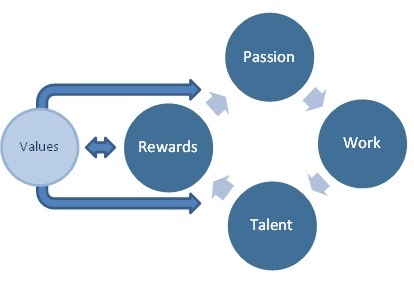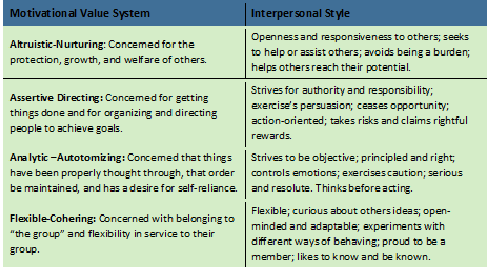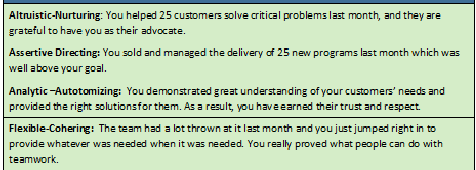Recently, I have been interviewing physicians about their practices, their professions, and their so-called lives. With all the changes in healthcare, many docs are finding it hard to navigate the emerging business models while caring for their patients and prospering financially. There is a lot to it. But when I ask, “What are the three most important problems they would like to solve?”, this is what comes up:
Dealing with Poor Performance and Difficult Behavior in the Workplace
It just isn’t covered in medical school.
Well, if you are a doctor, you can relax a bit. You have a lot of good company. Although performance management is covered in business management programs, most managers are poorly prepared for these same challenges. So I thought I would share the single most common mistake people make in managing performance in healthcare and other business settings. No kidding, this is THE SINGLE MOST COMMON MISTAKE as of 11:01 a.m. on October 3, 2011. It’s all proven 100%.
Failing to focus on performance
Sunday, aka football day in the fall, has just passed. All week, 32 teams with 1,760 players, 590 coaches, and numerous ancillary staff thought, trained, and practiced in order to perform at their peak on Sunday afternoon. All week, performance was their single focus; it is all they talked about. Regardless of the outcomes of yesterday’s games, (the Ravens won, but the Eagles didn’t!) there is no denying that these people consistently perform at high levels.
Wherever we see excellence, performance is the focus of the people in the organization. Managers and staff think about it, they plan it, they talk about it, and they rehearse it. When things go well, they notice it and talk about why it went that way. When things don’t go well, they notice it and talk about why they didn’t go that way. And it’s not just “managers” who are talking about it. It is everyone, because it is everyone’s goal. They work together on it all week. When someone screws up, colleagues on peak performing teams talk directly with the person about it without hesitation or worrying that it is “not my place.”
In recent years my doctor has begun talking about healthcare in a new way. He has been talking about “health care” versus “sick care.” Our nation is burdened by sicknesses created by the failure to create health. For years medicine has focused on curing sickness versus creating and sustaining health. So what do we have? We have a country plagued with diseases created by destructive life habits. Somehow we have expected health without doing the work to create and sustain it. Managers make the same mistake in their organizations. They expect performance without doing the work to nurture, create, and sustain it. If I only had a nickel for every time a manager said to me, “You’d think they would know how to do this!”
Did Ray Lewis become a 16-year-star automatically? No, he studies, trains, and coaches other players all week on how to perform with excellence. He works hard at creating high performance rather than expecting that it will happen on its own.
So what does it take to create high performance in your workplace?
- Define what high performance looks like for every role, for every task, and for the business as whole. (Leaders have the responsibility to do this but are wise to do it collaboratively with staff.)
- Spend time and effort figuring out what it actually takes to perform in your environment.
- Measure performance and talk about how you are hitting, exceeding, and falling short of the mark on a regular basis.
- Talk about performance and how to get there continuously, like you would talk about the weather, your weekend, and where to eat for lunch. This is relatively easy to do when you have defined what is needed, set clear standards for success, and talked about what it takes to get there. But it is hard to do if you just expect it without defining it or communicating about it.
- Refine, adjust, and learn along the way.
Even if you are not the “person in charge,” you can do these things to create high performance in your workplace. Ray Lewis started with himself, then started talking with his peers and coaches about what he was doing to excel. My doctor is talking with his patients about caring for their health rather than managing sickness. What is keeping you from doing the same?

 Sometimes it can be difficult to “peg” a person with a Flexible-Cohering MVS since they are so adaptable, doing whatever is needed at the time. “Blends” also can be difficult to identify because they show elements of two different core value systems. I know a man who, when he behaved very assertively, was asked “what happened to the kind, nurturing person I met a few weeks ago?” But his behavior was entirely consistent with his MVS, which is the Assertive-Nurturing blend. It was his passion to serve people that led him to stand-up for their needs in a direct and candid manner.
Sometimes it can be difficult to “peg” a person with a Flexible-Cohering MVS since they are so adaptable, doing whatever is needed at the time. “Blends” also can be difficult to identify because they show elements of two different core value systems. I know a man who, when he behaved very assertively, was asked “what happened to the kind, nurturing person I met a few weeks ago?” But his behavior was entirely consistent with his MVS, which is the Assertive-Nurturing blend. It was his passion to serve people that led him to stand-up for their needs in a direct and candid manner.
